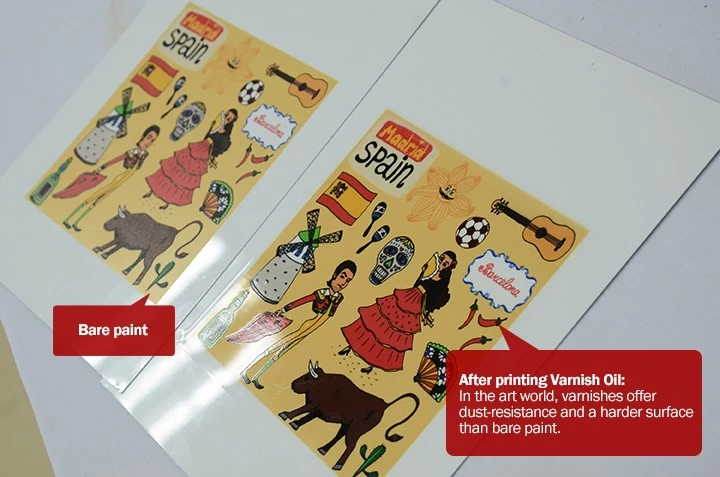Apex amazing Varnish Oil
Varnish is a transparent, hard, protective finish or film primarily used in finishing.Varnishes are also applied over wood stains as a final step to achieve a film for gloss and protection. Some products are marketed as a combined stain and varnish.
After being applied, the film-forming substances in varnishes harden directly, as soon as the evaporation of the solvent through certain curing processes, primarily chemical reaction between oils and oxygen from the air (autoxidation) and chemical reactions between components of the varnish, and dry" upon evaporation of the water but experience an extended curing period. Oil, polyurethane, and epoxy varnishes remain liquid even after evaporation of the solvent but quickly begin to cure, undergoing successive stages from liquid or syrupy, to tacky or sticky, to dry gummy, to "dry to the touch", to hard. Environmental factors such as heat and humidity play a very large role in the drying and curing times of varnishes. In classic varnish the cure rate depends on the type of oil used and, to some extent, on the ratio of oil to resin. The drying and curing time of all varnishes may be sped up by exposure to an energy source such as sunlight, ultraviolet light, or heat.
In the art world, varnishes offer dust-resistance and a harder surface than bare paint – they sometimes have the benefit of ultraviolet light resistors, which help protect artwork from fading in exposure to light. The varnish should be applied using an isolation coat (a permanent, protective barrier between the painting and the varnish, preferably a soft, glossy gel medium) to make varnish removal and overall conservation easier. The varnishes used for such a final removable art protection layer are typically mineral-spirit–based acrylic, rather than water-based.



